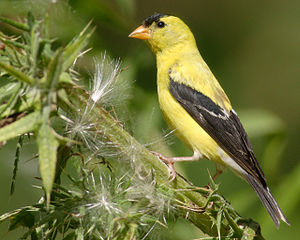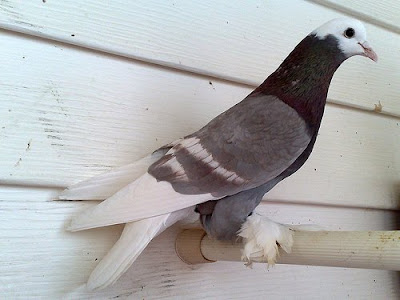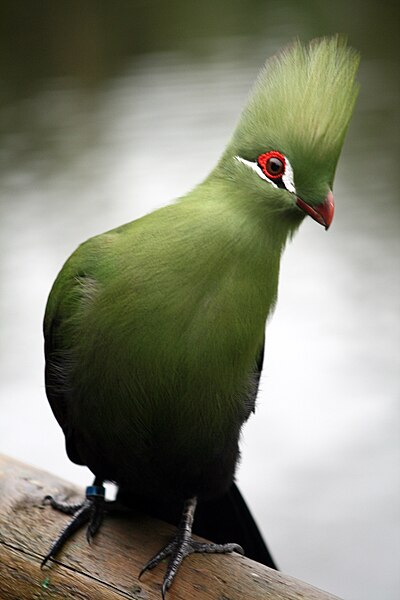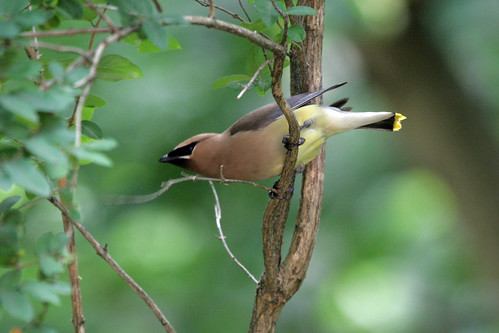Budgerigar

True Wild Life | Budgerigar | The budgerigar is a small colourful bird native to Australia. The budgerigar is thought to be a sub-species of parrot, making the budgerigar one of the smallest parrot species in the world. The budgerigar is often called a parakeet or a budgie and the budgie is one of the most popular birds to keep as pets, both in outside aviaries and in cages in homes. Budgerigars are thought to be popular pets due to their small size and brightly coloured feathers.

The budgerigar is a very sociable bird and budgies can been seen gathering in large flocks
in trees and scrub land in the Australian wilderness. Pet budgerigars
should always be kept at least with one other budgerigar to prevent them
from getting lonely. The wild budgerigar tends to feed on grass seeds and occasional insects. Budgies are known to be very easy animals to sex. Male budgies
and female budgies can be identified by the colour of their nose. The
male budgerigar has a blue nose while the female budgie's nose is brown
in colour.

Budgerigars are known to
be very hardy little creatures and if a budgie becomes ill in the wild,
the budgie will try to conceal it as long as possible so as not to
appear weak and vulnerable to potential predators. The main predators of the wild budgerigar are snakes and
birds of prey such as hawks. Wild budgerigars have also been known to
be hunted by local natives mainly for their brightly coloured feathers
which are then used in tribal costumes. The average lifespan of a wild
budgerigar is thought to be around 5 years but budgerigars have been
known to live much longer in captivity, some get to nearly 20 years old!
The average lifespan of a pet budgie is between 8 and 10 years.

Budgerigars are one of
the few bird species that do not build nests and female budgerigars will
therefore find a hole in a tree in which to lay their eggs. The female
budgerigar lays around 5 or 6 eggs, that hatch in around 3 weeks. The budgie chicks are
looked after by their mother and reach full adulthood when they are
roughly 9 months old. The budgerigar is a very vocal animal and the song
of the budgie is also quite loud. Budgerigars use their voices to
communicate with one another as they are very sociable animals.
 Summer
just seems to be flying. If you can believe it, some birds have
finished nesting and are already starting to fatten up in anticipation
of the journey south. As we approach August and September you will see
an increase in feeder activity.
Summer
just seems to be flying. If you can believe it, some birds have
finished nesting and are already starting to fatten up in anticipation
of the journey south. As we approach August and September you will see
an increase in feeder activity. 1. Feeders should be cleaned at least once a month. Wild Birds Unlimited
- East Lansing and Okemos- will clean your feeder for $5.00. Or you can
purchase professional cleaners like Scoot or Poop-Off at Wild Birds
Unlimited, or use a mild one part vinegar to nine parts water solution
to clean all of your feeders. Disassemble feeders and immerse them
completely for three minutes. Scrub with brushes (we have these too),
rinse thoroughly, and let air dry.
1. Feeders should be cleaned at least once a month. Wild Birds Unlimited
- East Lansing and Okemos- will clean your feeder for $5.00. Or you can
purchase professional cleaners like Scoot or Poop-Off at Wild Birds
Unlimited, or use a mild one part vinegar to nine parts water solution
to clean all of your feeders. Disassemble feeders and immerse them
completely for three minutes. Scrub with brushes (we have these too),
rinse thoroughly, and let air dry.

 According to Birds of Michigan
by Ted Black, “shrubby field edges, hedgerows, tangled riparian
thickets and abandoned, overgrown fields provide the elusive
Black-billed Cuckoo with its preferred nesting haunts. Despite not being
particularly rare in Michigan, it remains an enigma to many would-be
observers.
According to Birds of Michigan
by Ted Black, “shrubby field edges, hedgerows, tangled riparian
thickets and abandoned, overgrown fields provide the elusive
Black-billed Cuckoo with its preferred nesting haunts. Despite not being
particularly rare in Michigan, it remains an enigma to many would-be
observers. Similarly, “the
Similarly, “the 

 The
male goldfinch is a small, bright yellow finch with a black cap, wings,
and tail, and white rump and undertail coverts. Females are duller with
olive back and lacks black cap. Winter males will turn olive-brown with
yellow shoulder bars, white wing bars, dark bill, and may show black on
forehead and yellow on throat and face. Winter females are duller with
buff wings and shoulder bars, and lack yellow and black on face and
head. Juveniles resemble winter females but have a yellow wash on throat
and breast.
The
male goldfinch is a small, bright yellow finch with a black cap, wings,
and tail, and white rump and undertail coverts. Females are duller with
olive back and lacks black cap. Winter males will turn olive-brown with
yellow shoulder bars, white wing bars, dark bill, and may show black on
forehead and yellow on throat and face. Winter females are duller with
buff wings and shoulder bars, and lack yellow and black on face and
head. Juveniles resemble winter females but have a yellow wash on throat
and breast.

























